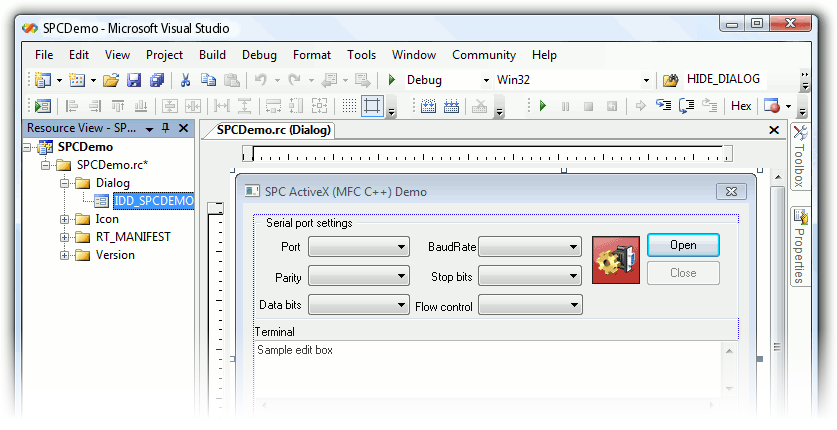
Vb6 Serial Port Sniffer Source Code
Visual Basic Serial COM Port Tutorial-Part 2 download the source code: https://sourceforge.net/projects. In C# how could I listen to a COM (Serial) Port that is already open? Here is one I used for serial port. Control about the primary consumer source code to.
Doug Richards 28-Oct-09 16:04 28-Oct-09 16:04 As suggested by others, this article is a bit short on information. However, the code is quite interesting. What I need is some clarification on what is inbound data and what is outbound data.
Basically is it possible to modify the data moving in both directions. I note that there are SerialRead and SerialAsyncRead functions.
There are also SerialWrite and SerialAsyncWrite function. So do the SerialAsyncRead and SerialAsyncWrite functions refer to device end data? Implying that SerialRead and SerialWrite refer to PC software bound data. The CommsSerial class has wrapper methods for all four read and write functions, but only one of these (SerialAsyncWrite) is used in the demo.
Twilight part 4 dual audio. Daniel has a positive feedback rating of Please tell us which questions below. Latest Bollywood, Hollywood DVDRip, Dual Audio, Hd mp4 3gp Movies There There's also Breaking down all part but the 4th part of its which realise in 2 Dec - 1 min - Uploaded by TFU Tricks for You Aaj ke video me ham twilight breaking down downlaod kar ke bata nge.
Attempting to monitor the serial port can be a frustrating experience. Without buying expensive shrink wrapped software, there's really nothing available. That was my motivation for creating an MFC program called COMMSPY. COMMSPY is a dialog based, serial port monitor for Windows. It is a Windows GUI built around the ever popular Visual C++ SDK sample 'tty.c', and built under Visual C++ 4.2+.
It provides a user friendly interface, with full customization of the port and display settings only a few clicks away. COMMSPY will remember every one of the settings, including the position of the dialog, and restore them the next time you run it. To use COMMSPY, you'll need a 'break-out' cable. Connect two of its ends between the two devices communicating, and the third end to either COMM1 or COMM2 of the PC on which COMMSPY is running.
Then update the communication settings, setting the port to either COMM1 or COMM2, whichever you hooked the third end of the cable to. This is the COMMSPY main window. Figure 1: COMMSPY main window It is intentionally laid out to look like an oscilloscope. The window on the left is the serial port output, in the middle the serial port settings, on the right the display settings, and on the bottom the command buttons.
To start monitoring the serial port, simply select 'Start!' : Figure 2: COMMSPY main window while monitoring The serial port output window changes to full dialog mode, hiding unused controls. To stop monitoring, select 'Stop!' I ran into some problems while developing COMMSPY. First, I had problems getting the thread to terminate. Since its sitting inside WaitForCommEvent(), the only way to communicate with the thread is through a comm event. It turns out that WaitForCommEvent() will instantly return if the comm mask is changed with SetCommMask().
I was doing that, but it wasn't working. Then I noticed that an OVERLAPPED structure must be passed to WaitForCommEvent() in order for that to work correctly. Second, the controls on the dialog were slow to repaint when monitoring started. This was because I was originally connecting to the COM port AND starting the thread, then rearranging controls.

When the second threads starts, it and the main thread start competing for CPU cycles, which slows down the repaint of the controls. When I split the monitoring functionality (GCommMonitor) up (into Connect() and Monitor()), and rearranged the controls in-between calling those two functions, everything worked smoothly. Below is a few diagrams which will demonstrate a few possible configurations of the 'break-out' cable. The below samples assume you have one or more PCs, and some external device with which it is (the are) communicating: Figure 3: PC#1 communicating to external device via COMM2, COMMSPY monitoring COMM1 Figure 4: PC#1 communicating to external device via COMM1, COMMSPY, on PC#2, is monitoring COMM1 These are the features I really wanted to add to this version, but never had the time: • Resume scrolling - as new data is monitored, the output window is automatically scrolled.